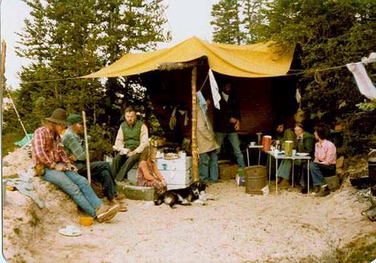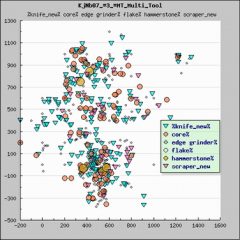Archaeological Site Survey
 To theorize how herd followers survived in Canada’s Barrenlands, we begin by examining the landscape for evidence of their presence. Where tool artifacts have accumulated in stratified campsites, we can accurately identify the period they were created. This information then becomes the key to deciphering those artifacts that are found scattered upon open ground, and of mixed periods of manufacture.
To theorize how herd followers survived in Canada’s Barrenlands, we begin by examining the landscape for evidence of their presence. Where tool artifacts have accumulated in stratified campsites, we can accurately identify the period they were created. This information then becomes the key to deciphering those artifacts that are found scattered upon open ground, and of mixed periods of manufacture.
Now we can apply our knowledge of ancient hunting societies to create a guide to how their rangewide campsites were used in every respect of seasonal occupation.
Spatial Analysis of Artifacts
From a vast collection of gathered artifacts, researchers at the Archaeological Survey of Canada  have assembled computer databases for inventory and analysis.
have assembled computer databases for inventory and analysis.
We may choose to examine how the many tools are used in the hunting or butchering of caribou, followed by other tools used in working bone and antler, plus special tools used in woodworking. As our plot here suggests, there are numerous combinations of tools that are manufactured within the narrow confines of the campsite – and this is specific to only one of seven cultures that left such evidence for us.
Let’s take a look at the customized tools our Team use today, in solving the riddle of a palimpsest.
Sharing Our Results
After conducting our research on a topic, we document our conclusions and present them at conferences, as published papers, and for readers’ comment through this Website. Due to copyright restrictions, not all of these papers can be reproduced on-line. It is our intent to post selective work-in-progress, however, to promote dialogue with other researchers in Spatial Analysis and Gender-based Archaeology. We appreciate comments on our research and sometime accept new members living in the Ottawa region and who are able to devote 8-12 hours weekly.
Visit our Interpretations Section to access our current papers, and to share your ideas with us.
For further readings, please consult our Bibliography & Links